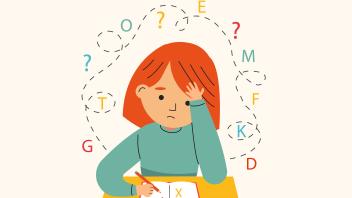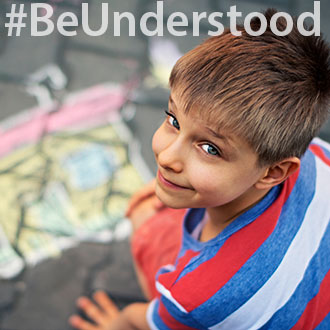Many kids struggle with reading. One estimate is that about 10 million children have difficulties learning to read. The good news is that 90 to 95 percent of reading impaired children can overcome their difficulties if they receive appropriate treatment at early ages.
How can reading difficulties be caught early?
The key is for parents and teachers to be aware of how their student or child is doing and to act immediately if they suspect a problem. Parents and teachers cannot necessarily count on a formal diagnosis as the only sign of a significant reading related difficulty.
Reading difficulties occur on a continuum, meaning that there is a wide range of students who experience reading difficulties. There are those students who are diagnosed with a reading-related disability but there is an even larger group of students (without diagnoses) who still require targeted reading assistance.
When a student has a reading-related difficulty – whether he or she has been formally identified as having a disability or not – the key is to:
- Correctly determine the nature and source of a student’s difficulty
- Provide targeted instruction to remediate difficulties and increase skills level
- Accommodate a student’s weaknesses and build upon his or her strengths
When should a problem be suspected?
Be aware of how each child is doing. A preschool student should be checked, for example, if he or she has a much more difficult time than other students in pronouncing or rhyming words or in learning numbers, the alphabet, the days of the week, colors, or shapes.
See the articles on Literacy Milestones for more information about where children should be in their reading development. Also, see the Accomplishments in Reading table from the Snow, Burns, and Griffin (1998) book, Preventing Reading Difficulties in Young Children. If a student shows consistent problems with several milestones, then you may want to have him or her evaluated for possible learning or reading disabilities.
Remember that students learn differently and at different rates. Not all students will develop in the same way or at the same rate, but most students develop at a steady pace so that by the end of third grade, they are able to read grade appropriate material fluently with comprehension. It is important that a student not get too far behind in learning how to read; reading difficulties are best addressed when they are caught at a young age.
Are there some students that are more prone to reading difficulties?
Some students are more likely to develop reading difficulties than others. It is important to know about these tendencies so students can be monitored and any difficulties caught early. Students may be more likely to develop a reading difficulty if they have parents with histories of reading difficulties; if they have been diagnosed with a specific language impairment or a hearing impairment; or if they gained less knowledge or skills related to literacy during preschool years (Snow, Burns, & Griffin, 1998).
What is the role of teaching and instruction with regard to reading difficulties?
Good reading instruction is necessary for students to learn to read. It is also no simple task. Reading and language experts have likened teaching reading to rocket science (Moats, 1998). With so many different reading components, it can be difficult to diagnose students’ difficulties and find precisely the right techniques to remediate them. To be successful, teachers need strong and deep understanding of reading theory and practice.
When is the difference between a reading "difficulty" and a reading "disability"?
Some students struggle with reading, but do not have a diagnosed disability. These students may just lag behind their peers a bit, requiring more time to learn certain things, they may require more specialized reading instruction than has been provided, or the students may have previously received poor reading instruction. Whatever the case, these students depend on caring and insightful schools, teachers, and parents to provide them the reading help they need.
Some students are formally diagnosed with a learning disability. These students can receive special education under a federal law called the Individuals with Disabilities Education Act (IDEA). To outline the educational goals and services that the student needs to be successful, an Individualized Education Program (IEP) is developed. For students with a learning disability who struggle with reading, reading-related support and services can be included in the student’s IEP goals. According to one expert researcher, reading disabilities likely occur in at least 20 percent of the population (Shaywitz, 2003), however only about four percent of school-age students receive special education services for reading disabilities.
What is a learning disability, in general?
People with learning disabilities (LD) have difficulty learning particular skills or academic areas. Learning disabilities are not related to intelligence. They are often physiological, in that the brain of someone with LD may be wired differently than other people’s brains (though not better or worse).
How can I help?
When a student has difficulty with reading, it can be overwhelming to teachers and emotional for both parents and students. The more that is learned about reading and the specific problem, however, the less overwhelming things will seem.
Parents and teachers can act on behalf of a student who struggles with reading by trying to pinpoint the nature and source of a student’s difficulty, by increasing skills levels, and by building upon his or her strengths.
Kathryn Drummond, Ph.D. is a research analyst at The Access Center, a part of the American Institutes for Research, funded by the U.S. Department of Education Office of Special Education Programs.

